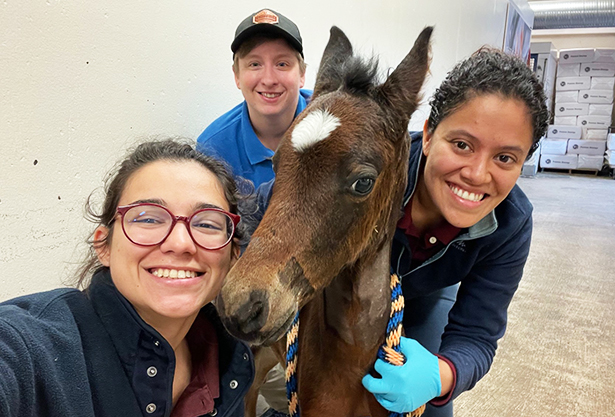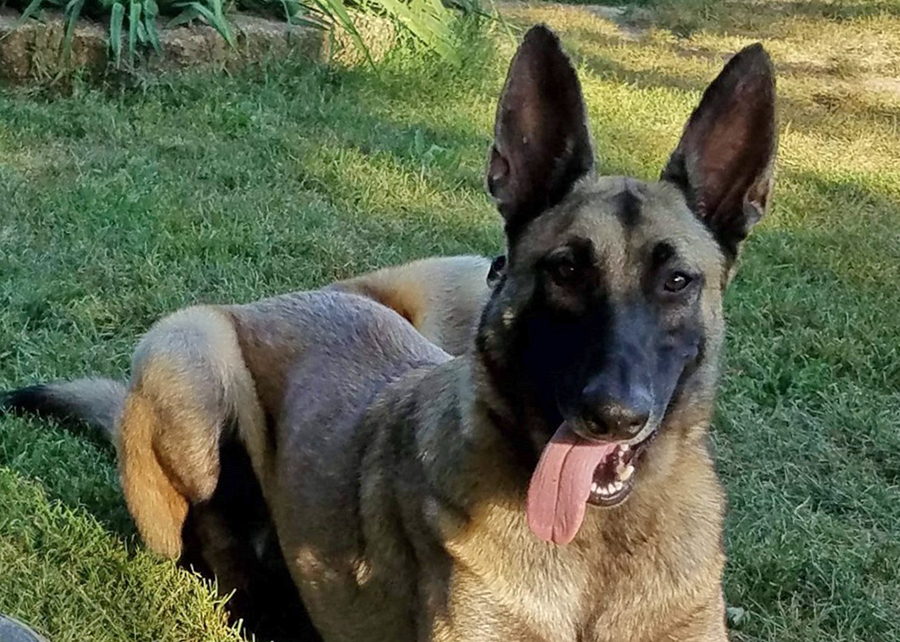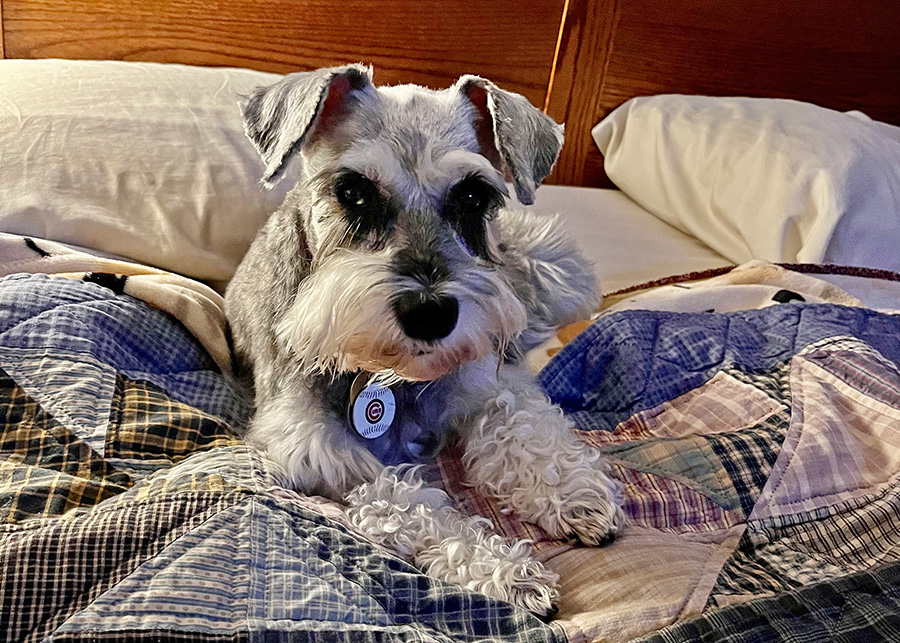This young ruby-throated hummingbird was brought to the Wildlife Medical Clinic this week after she was found in the parking lot of a Menard’s, unable to fly. On examination, the students noted that she had a wing droop, but due to her incredibly small size (a whopping 3 grams!), they were unable to determine if the wing injury was bone or simply soft-tissue (muscle, ligament, or tendon) related.
Due to a hummingbird’s tiny size and normal anatomy, fixing a damaged wing on these species’ brings some unique challenges. First, our ability to palpate (feel) fractures or other abnormalities is limited. We are always very gentle and adjust our pressure based on the patient’s size during handling, but a hummingbird is so small, that almost any pressure at all can be damaging. It takes patience and a great deal of skill to learn to properly examine an animal of this size. Second, radiographs (x-rays) don’t work very well with hummingbirds. The x-ray beam does a poor job differentiating bone from the rest of the body in something that little, so we are usually left with very grainy images and the need of a great imagination to diagnose an injured bird with radiographs. Finally, surgery is essentially out of the question for a 3-gram bird, but an external splint (like a sling or cast) is also a problem because not only is bandaging a bird this size inherently difficult, but hummingbirds are also unable to walk. The legs and feet of a hummingbird are small, even relative to their body size, and they typically use them only for perching, scooting sideways on a branch, or for grooming. Therefore, splinting a hummingbird’s wing essentially immobilizes her, leading to an inevitable face plant and inability to right herself or eat.
This brings up another factor in hummingbird care: an incredibly rapid metabolism. I recently learned (from this amazing video that also displays hummingbird flight in slow motion) that a 3-gram hummingbird eats about 10 calories each day. This may not seem like much, but the calories per gram ratio is actually enormous. That’s the equivalent of a 150-pound person eating more than 225,000 calories each day! What this means is that hummingbirds need constant access to food. And when they can’t fly, they need to access it from the ground or a perch. And when they’re in captivity, they have to be fed by hand until they learn to recognize the artificial food source and feed themselves. At the Wildlife Medical Clinic, we create a specialized hummingbird nectar formula comprised of sugar, water, protein, vitamins, and minerals because hummingbirds need much more than sugar water to survive, and especially to heal. We then have to make sure that our hummingbird patients eat at least every hour, if not more often. It’s quite a task!
Despite all of these limitations, hummingbirds can actually do quite well at the hospital. Of course, bad fractures or other severe injuries lessen their chances of recovery, but young, malnourished, stunned, or mildly injured birds often adapt well to their nursing schedule and can make a full recovery.
So far, this young bird has shown some improvement from intake. She is much brighter, she’s able to move around the cage without much trouble and she’s already picked up on how to eat from the syringes we provide. We’ll give her another week of cage rest before putting that wing to the test, but hopefully the down time will allow the wing to heal so that she can be released in time for winter migration.
Above photo: The hummingbird rests calmly on a branch. In the background is an example of the food offered to hummingbirds at the clinic. The “nectar” is put into 1 ml syringes and secured to branches around the enclosure to allow the bird to access the food while perched. The coloring on the tip is thought to stimulate the bird by mimicking the colorful flowers on which they dine!
—Dr. Nicki Rosenhagen




